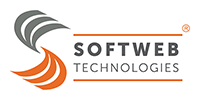As the mining industry continues to evolve, advancements in technology are reshaping how operations are conducted, how resources are managed, and how efficiency is maximized.
This transformation is widely categorized as the journey from Mining 1.0 to the emerging Mining 5.0. As we embrace Mining 4.0 today, marked by advanced digital and automation solutions, we stand on the threshold of Mining 5.0, where a fully integrated digital mining ecosystem is set to redefine industry standards.
The Journey from Mining 1.0 to Mining 4.0
Mining 1.0: The Era of Manual Operations
The journey began with Mining 1.0, characterized by manual labor, basic tools, and rudimentary methods. This phase was labor-intensive, slow, and posed significant safety risks due to the limited technology.
Mining 2.0: Mechanization and Power
With the industrial revolution, Mining 2.0 introduced mechanized processes powered by steam and electricity, which allowed the use of larger equipment and slightly enhanced productivity and safety.
Mining 3.0: Basic Automation and Remote Monitoring
As technology advanced, the industry moved into Mining 3.0, where automation began to take shape. Basic control systems allowed machinery to be remotely monitored, leading to safer and more efficient operations.
Mining 4.0: A Digitally Integrated Mining Industry
Today, Mining 4.0 signifies a fully connected industry driven by IoT, data analytics, and autonomous technologies. It allows real-time monitoring, predictive maintenance, and operational optimization, enabling a level of efficiency and safety unimaginable in previous eras. Mining 4.0 is a critical stage in digital mining transformation and is already impacting productivity by leveraging data for smarter decision-making and risk management.

The Technologies Powering Mining 4.0
Mining 4.0’s success depends on a range of innovative technologies inluding IoT in Mining that bring efficiency, safety, and data-driven insights into daily operations. Some of the key technologies driving Mining 4.0 include:
1. IoT and Digital Twin:
By collecting real-time data from sensors on machinery and equipment, IoT enables the creation of a Digital Twin—a virtual model of physical mining assets. This allows for detailed monitoring and predictive analysis.
2. Artificial Intelligence (AI) and Machine Learning (ML):
AI and ML algorithms process data for predictive maintenance, ensuring machinery operates at peak efficiency and downtime is minimized.
3. Cloud Computing:
Centralized data management enables streamlined access to information, supporting collaborative decision-making across the mining site.
4. Robotics and Automation:
Robots and autonomous machinery are particularly valuable in remote or hazardous areas, reducing the need for human presence and enhancing safety.

5. Real-Time Location Systems (RTLS):
RTLS enhances safety by tracking equipment and personnel, preventing collisions, and offering emergency response capabilities. This technology is ushering Modernization in Coal Suply Chain
6. 5G and 6G Connectivity:
The high-speed connectivity offered by these networks supports fast data transfer and real-time communication, essential for digital mining operations.
7. Telematics:
Telematics systems capture and analyze data on equipment performance, location, fuel usage, and maintenance needs, improving fleet management and operational efficiency.
8. Blockchain:
Blockchain enables secure data management and transparent supply chain tracking, enhancing regulatory compliance and stakeholder trust.
9. Drones and Satellites:
Drones and satellite imagery provide aerial views for land use optimization, environmental monitoring, and safety surveillance.
Applications of Mining 4.0
Mining 4.0 applications span a wide range of functions, from predictive maintenance to advanced geospatial analysis. Here are some ways these technologies are transforming mining:
– Predictive Maintenance: By forecasting equipment failures, predictive maintenance helps prevent unplanned downtimes and extend equipment lifespan.
– Automated Haulage and Logistics: Autonomous vehicles streamline transport logistics, reducing costs and improving on-site safety.
– Real-Time Monitoring and Optimization: Continuous tracking allows instant adjustments to improve productivity and manage risks.
– Autonomous Drilling and Blasting: Robots perform precise drilling and blasting, increasing productivity and reducing human risk.
– Geospatial Analysis: High-precision data enhances resource extraction planning and environmental impact assessments.
– Supply Chain Optimization: Blockchain and IoT streamline supply chains, reducing delays and ensuring resource availability.

Moving Toward Mining 5.0: The Future of Digital Mining
Mining 5.0 promises an ecosystem of highly advanced, integrated technologies that will build on the foundations of Mining 4.0 with better performance in Mining KPIs. The next phase aims to drive even greater sustainability and efficiency through emerging innovations such as:
– Hyperspectral Imaging:
This technology captures detailed spectral data for precise mineral identification, enhancing exploration.
– Bioleaching and Biomineral Processing:
Environmentally friendly, these techniques use microbes for metal extraction, reducing the environmental footprint.
– LiDAR and Aerial Mapping:
These tools create 3D site maps, enabling advanced planning and resource management.
– Quantum Computing:
Quantum computing will support complex simulations, speeding up mineral exploration and operational planning.
–Robotics and Swarm Intelligence:
Coordinated robotic systems will improve operational efficiency and safety in hazardous mining zones.
Challenges on the Road to Mining 5.0
Despite its potential, the transition to Mining 5.0 is not without obstacles. The industry faces challenges such as:
– Technological Barriers: Data management, cybersecurity, and infrastructure are significant hurdles.
– Workforce Adaptation: A skills gap exists as the industry moves toward advanced automation, and ongoing training is crucial.
– Economic Costs: High initial investments in digital infrastructure can be challenging, particularly for smaller operations.
– Environmental Considerations: Sustainability remains a priority as the industry seeks to balance growth with environmental responsibility.
Embracing the Future with Digital Mining
The journey from Mining 1.0 to Mining 4.0 represents the remarkable progress the mining industry has made, with Mining 5.0 poised to take it even further. As the industry integrates more advanced technologies, digital mining will continue to enhance productivity, improve safety, and drive sustainable practices.
In an increasingly connected world, Mining 4.0 and Mining 5.0 reflect the sector’s commitment to innovation. By embracing this transformation, the mining industry can unlock new levels of efficiency and lay the groundwork for a future that is both productive and responsible.


